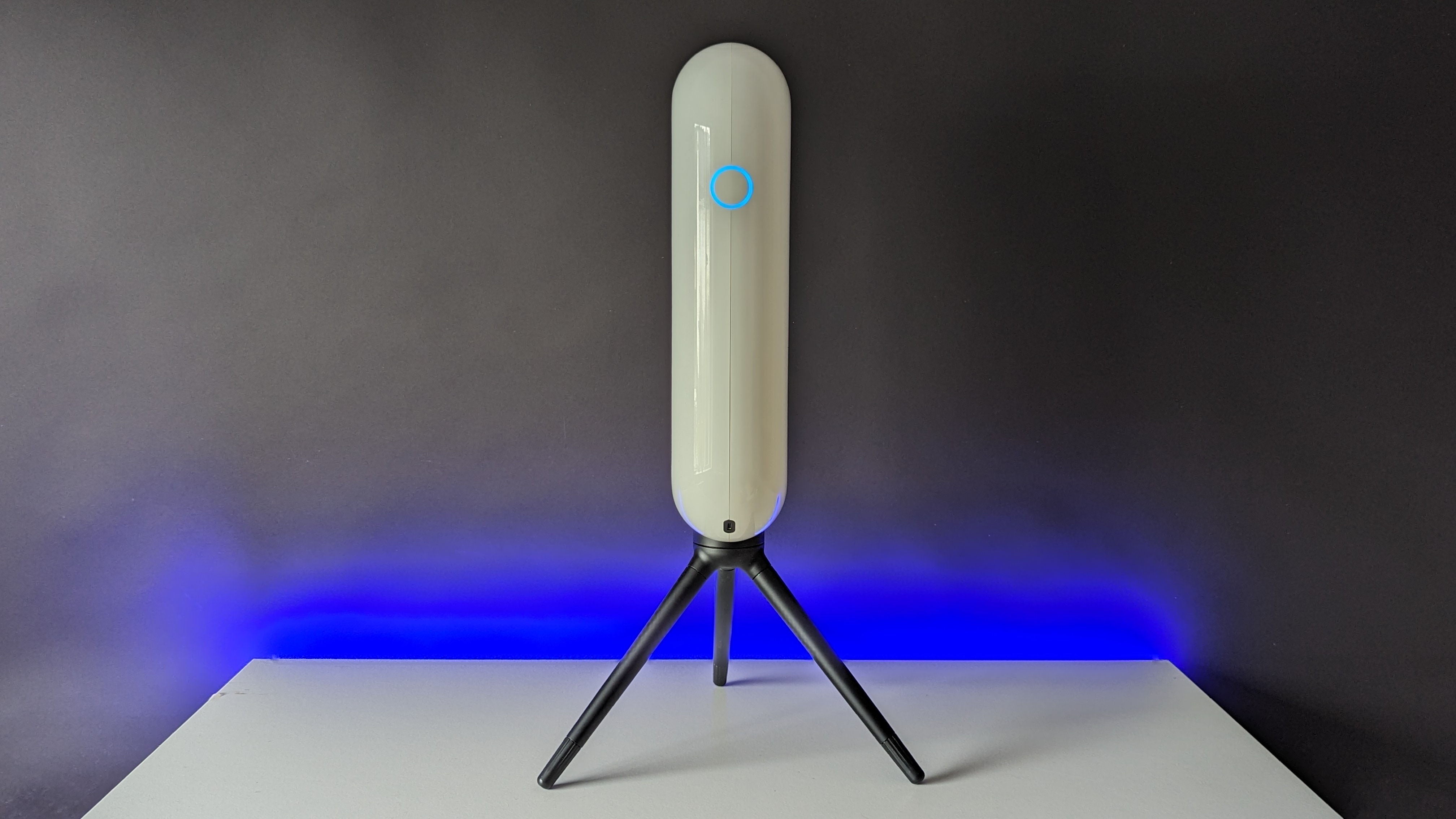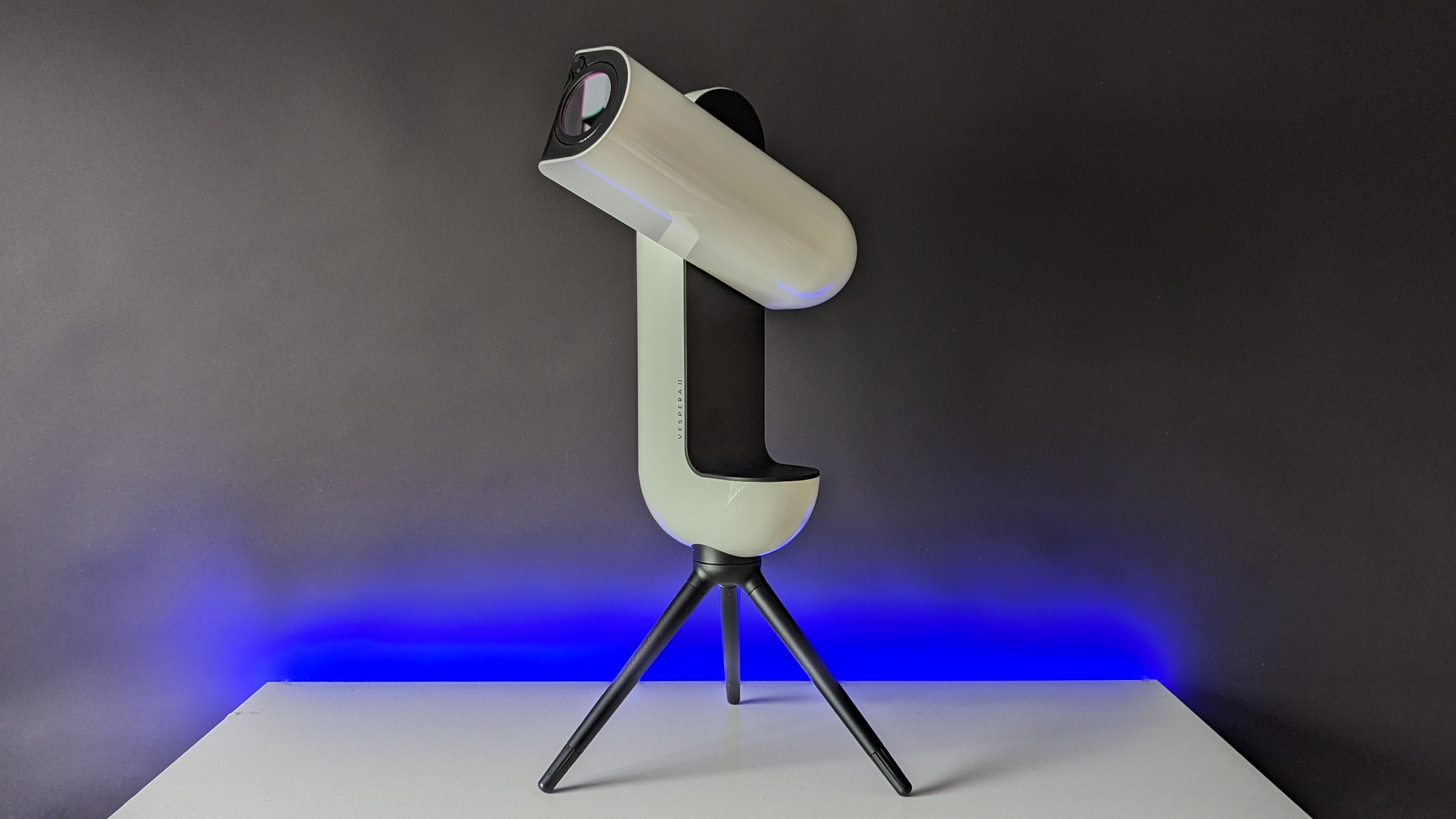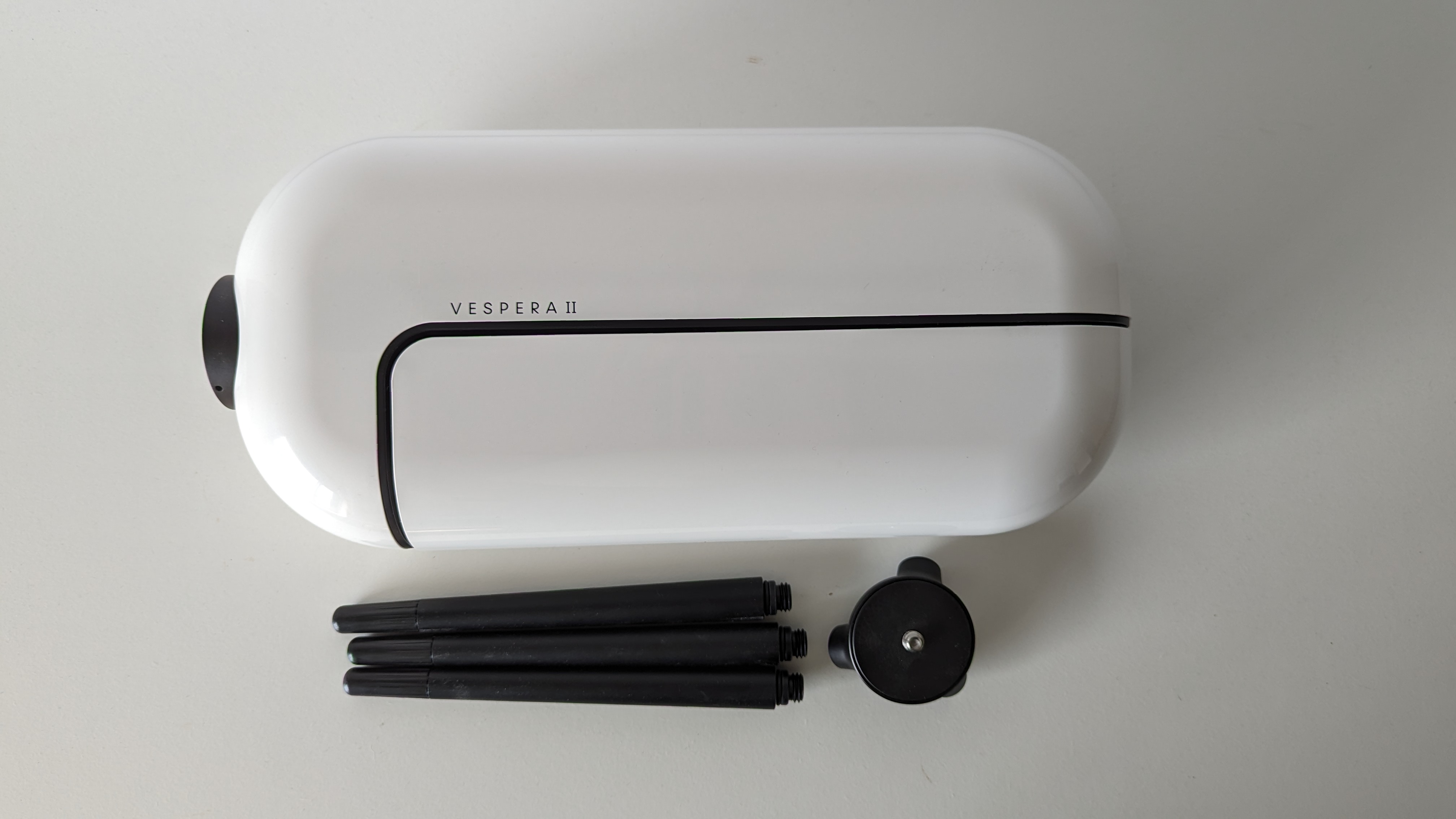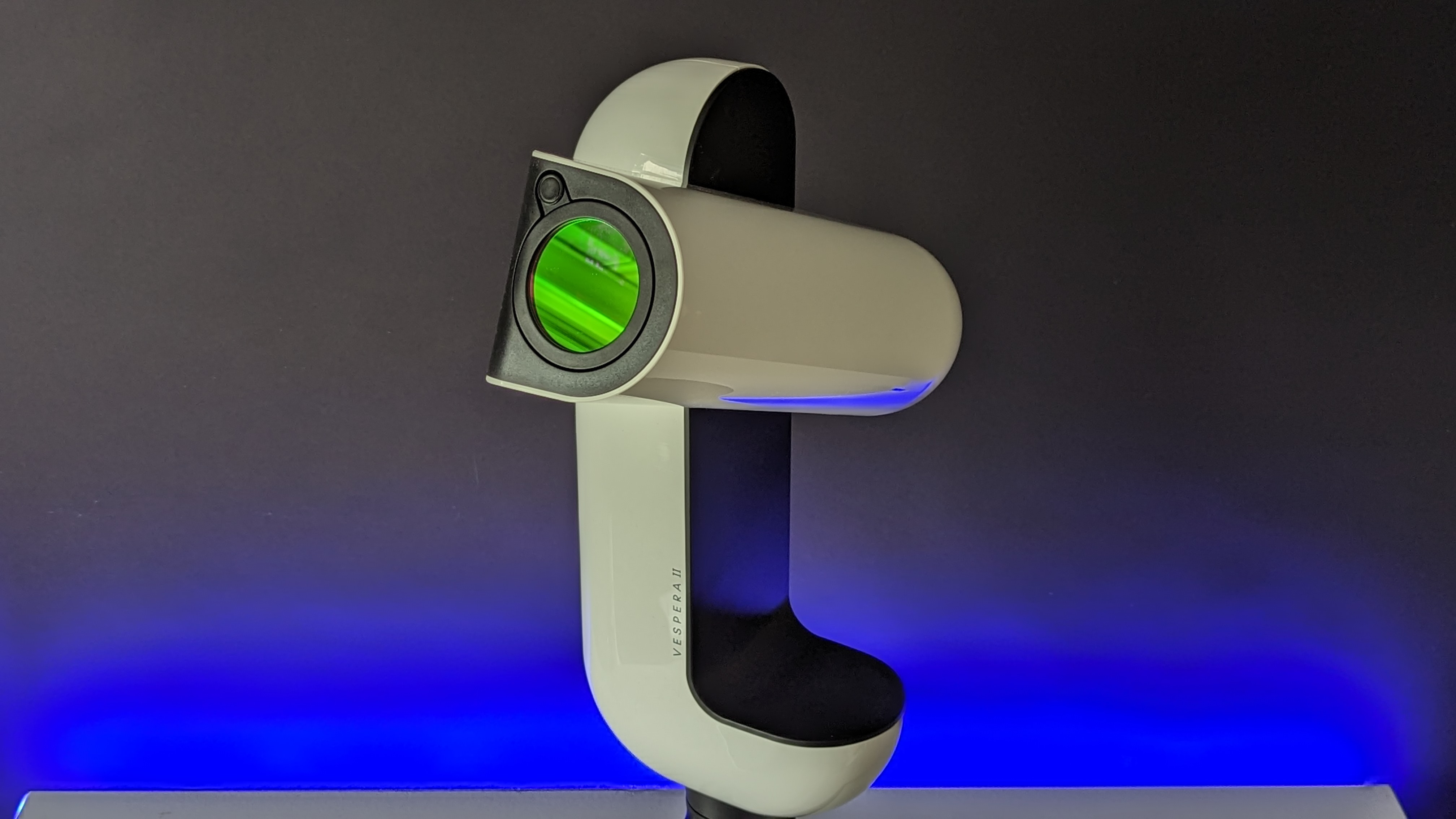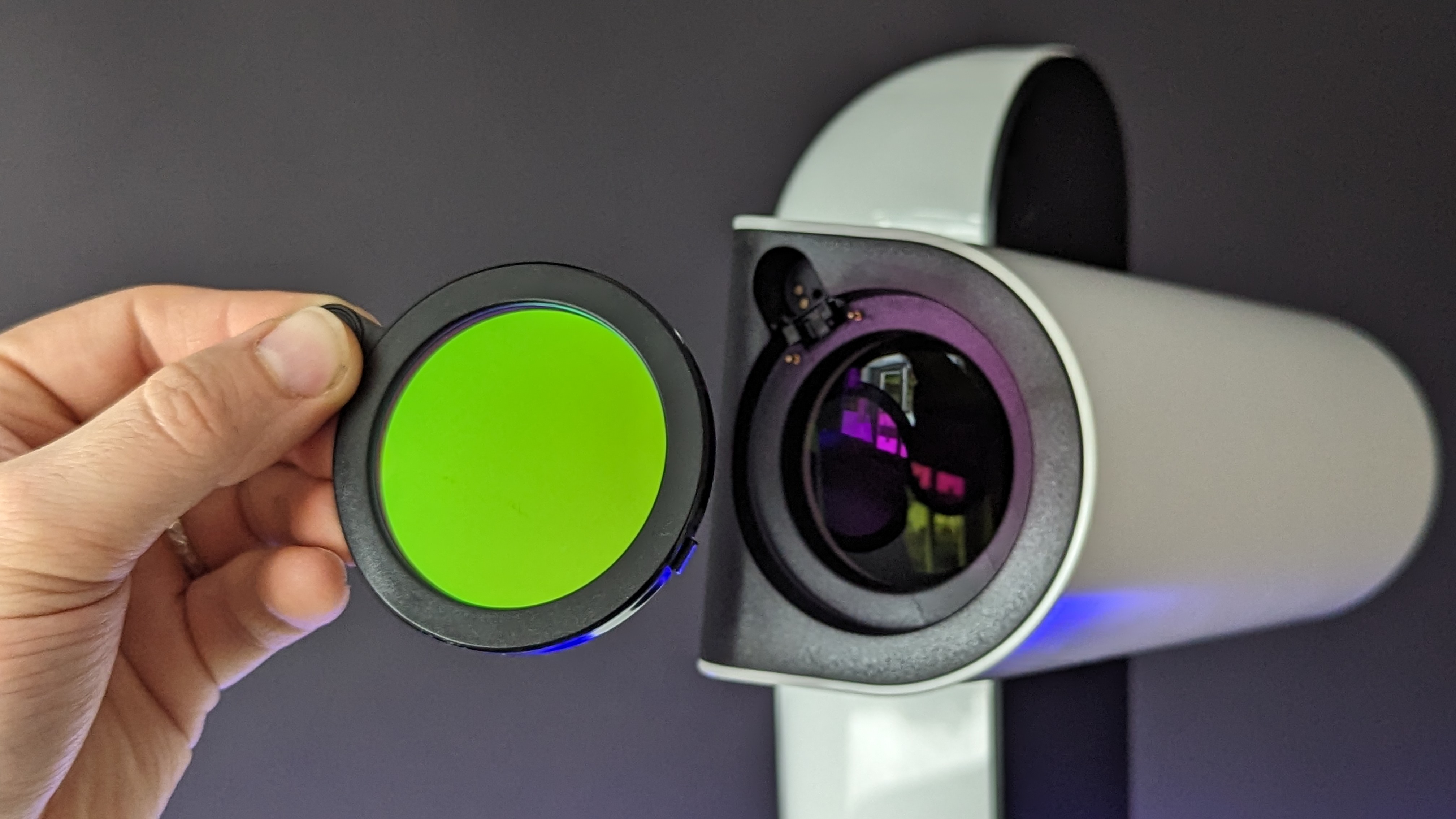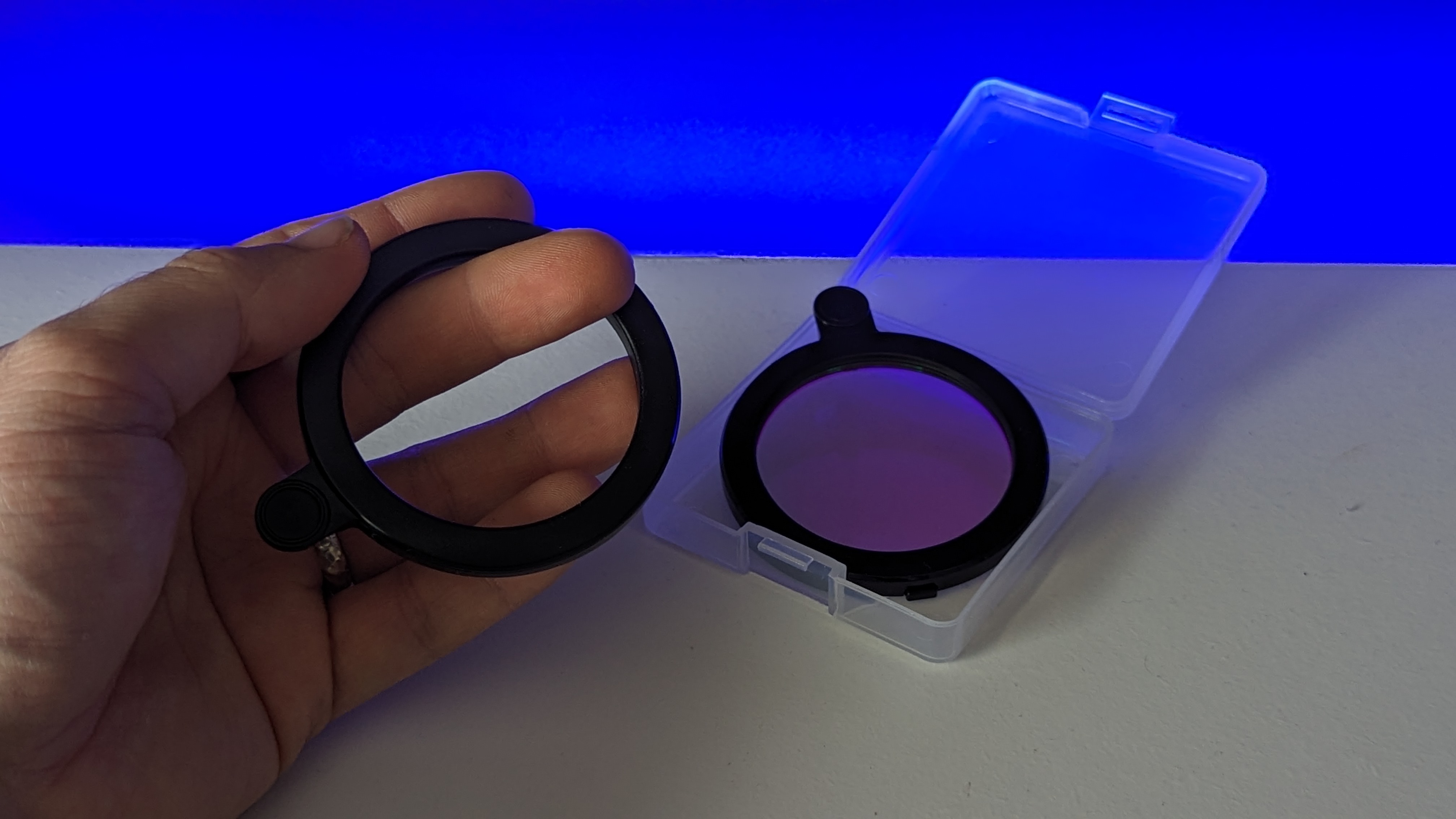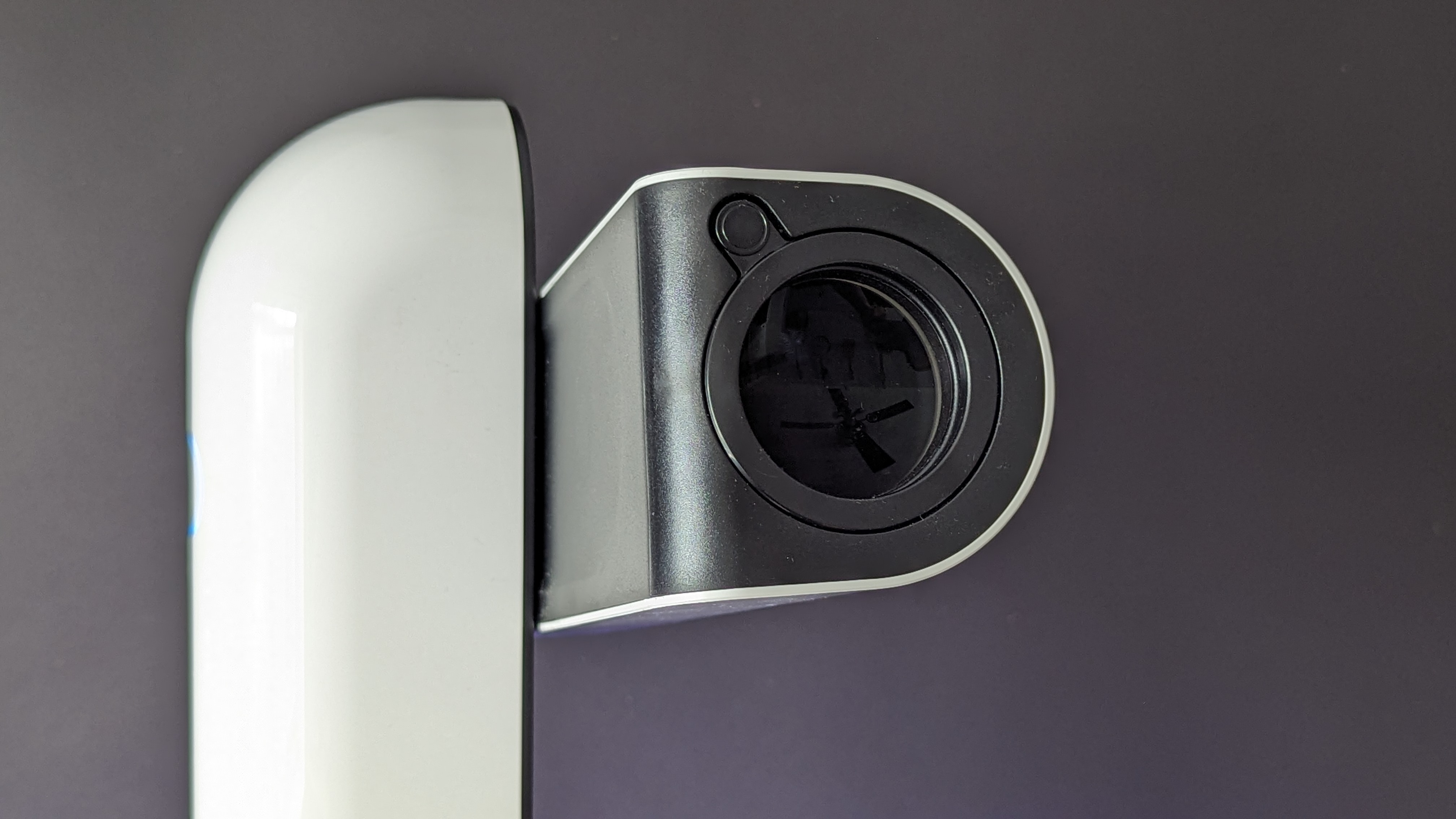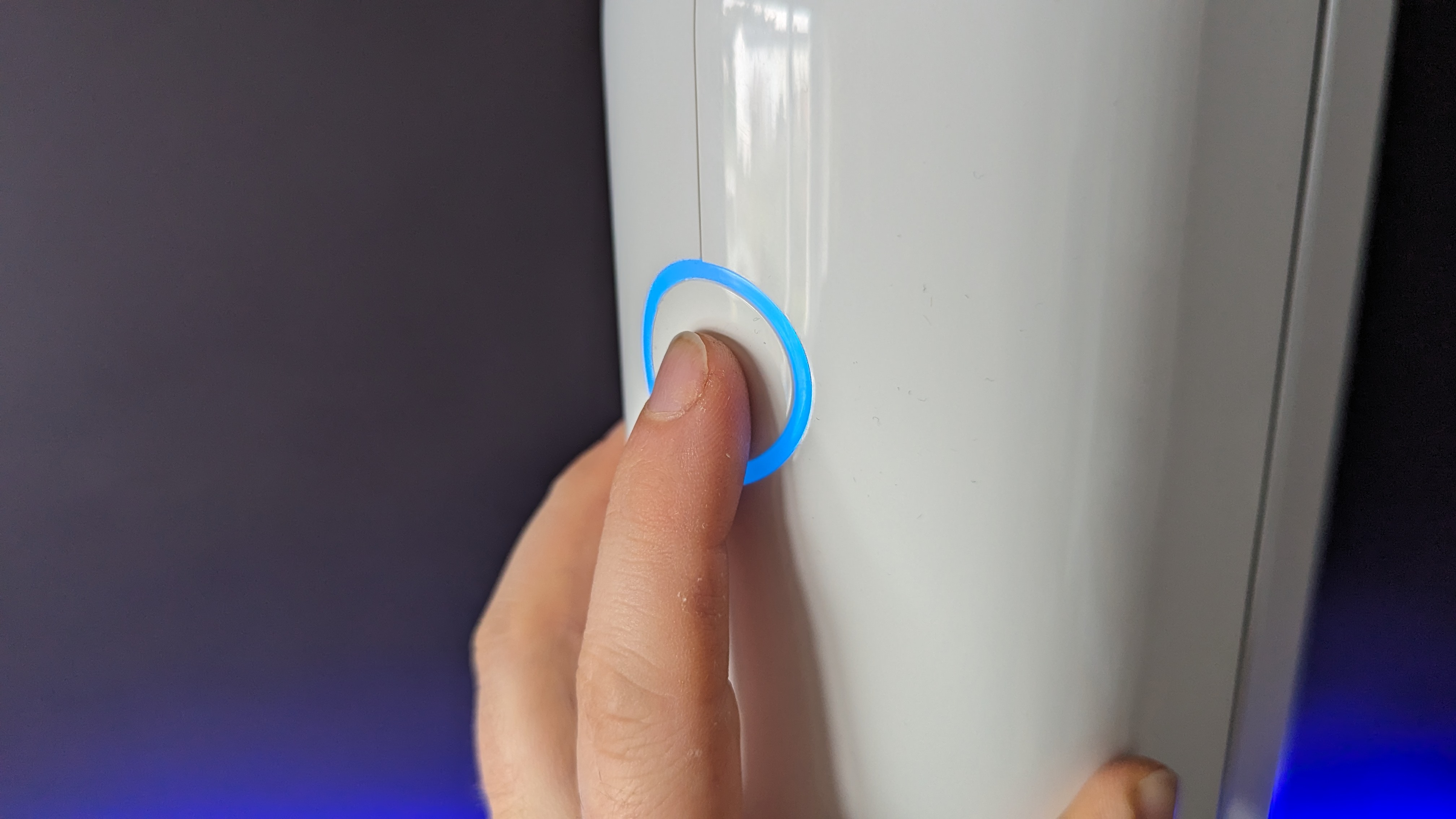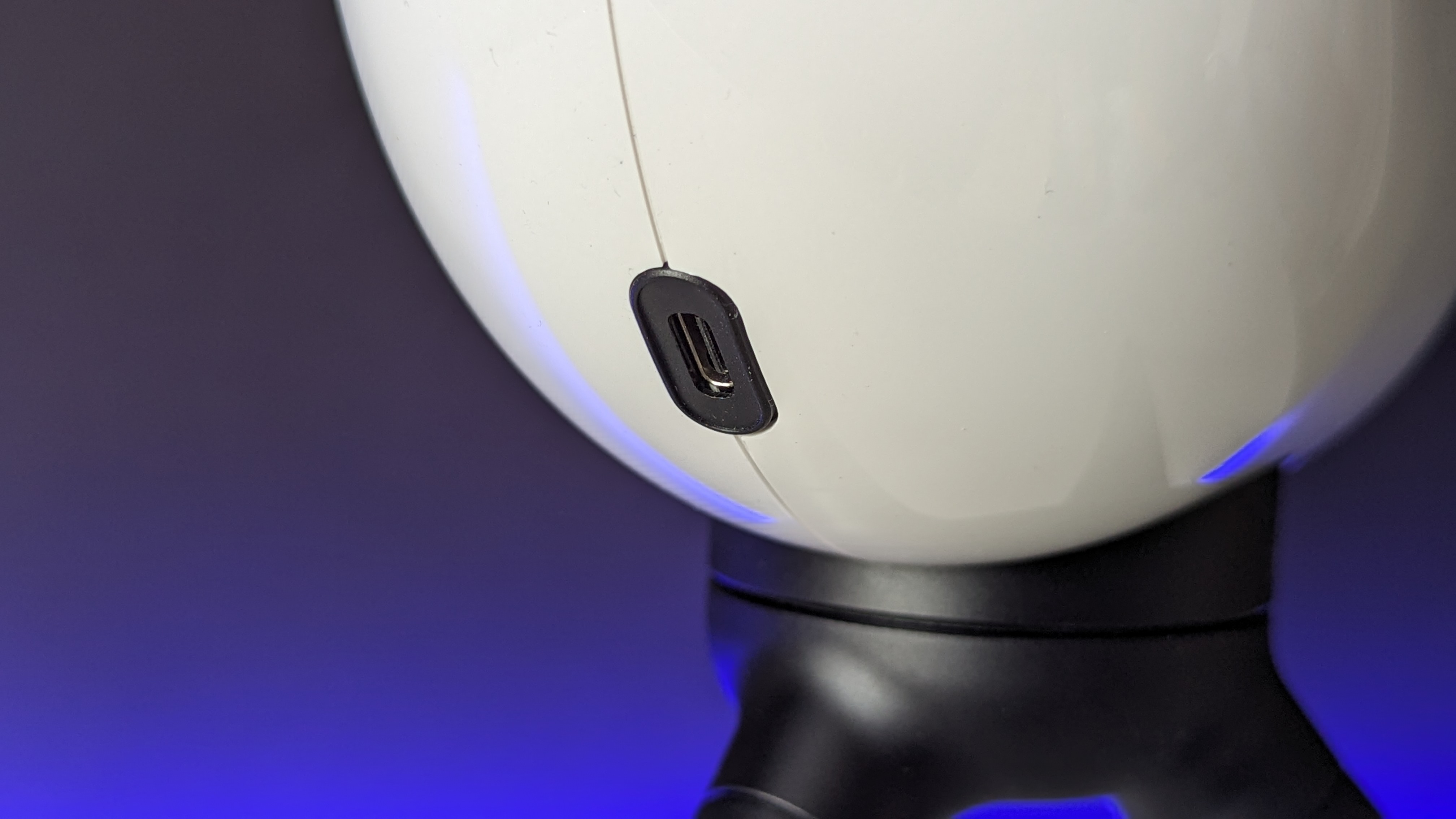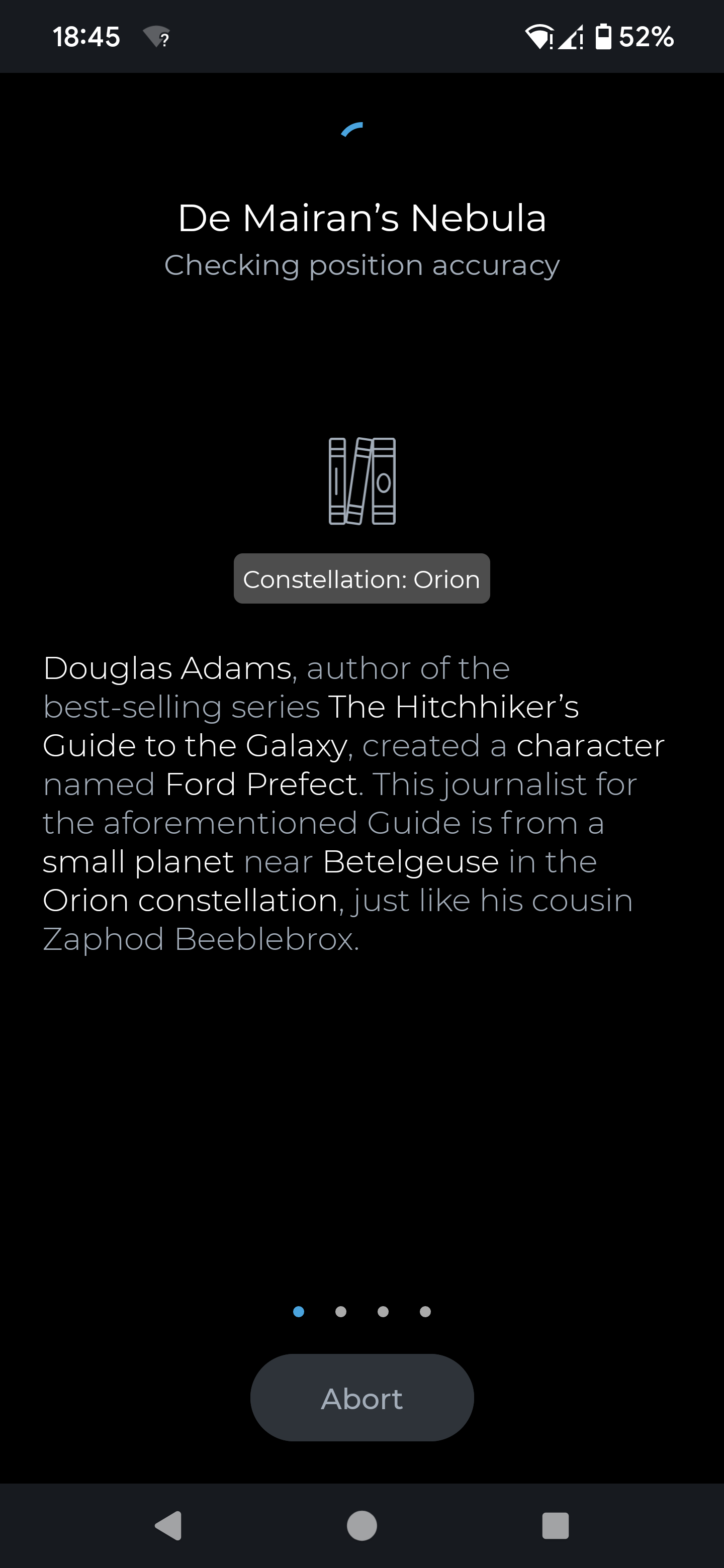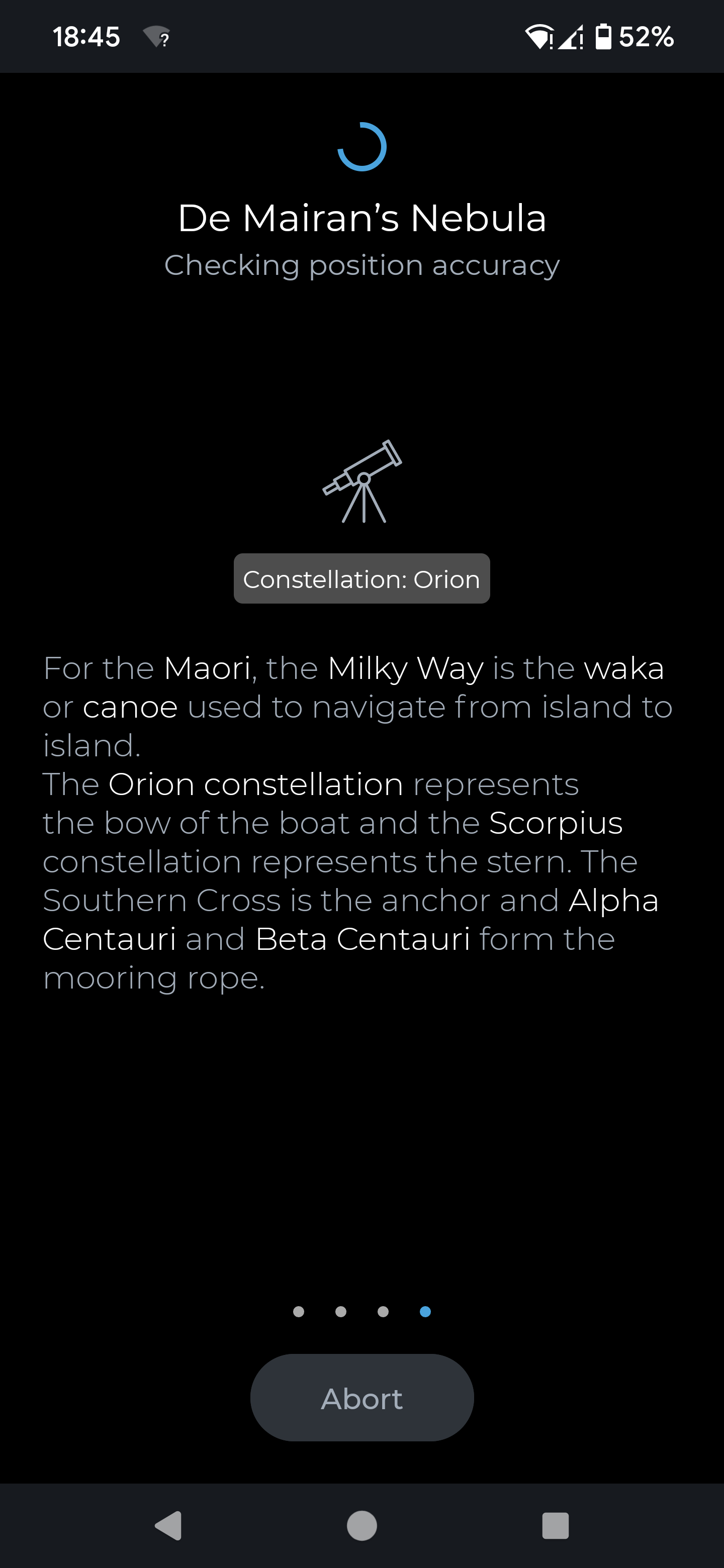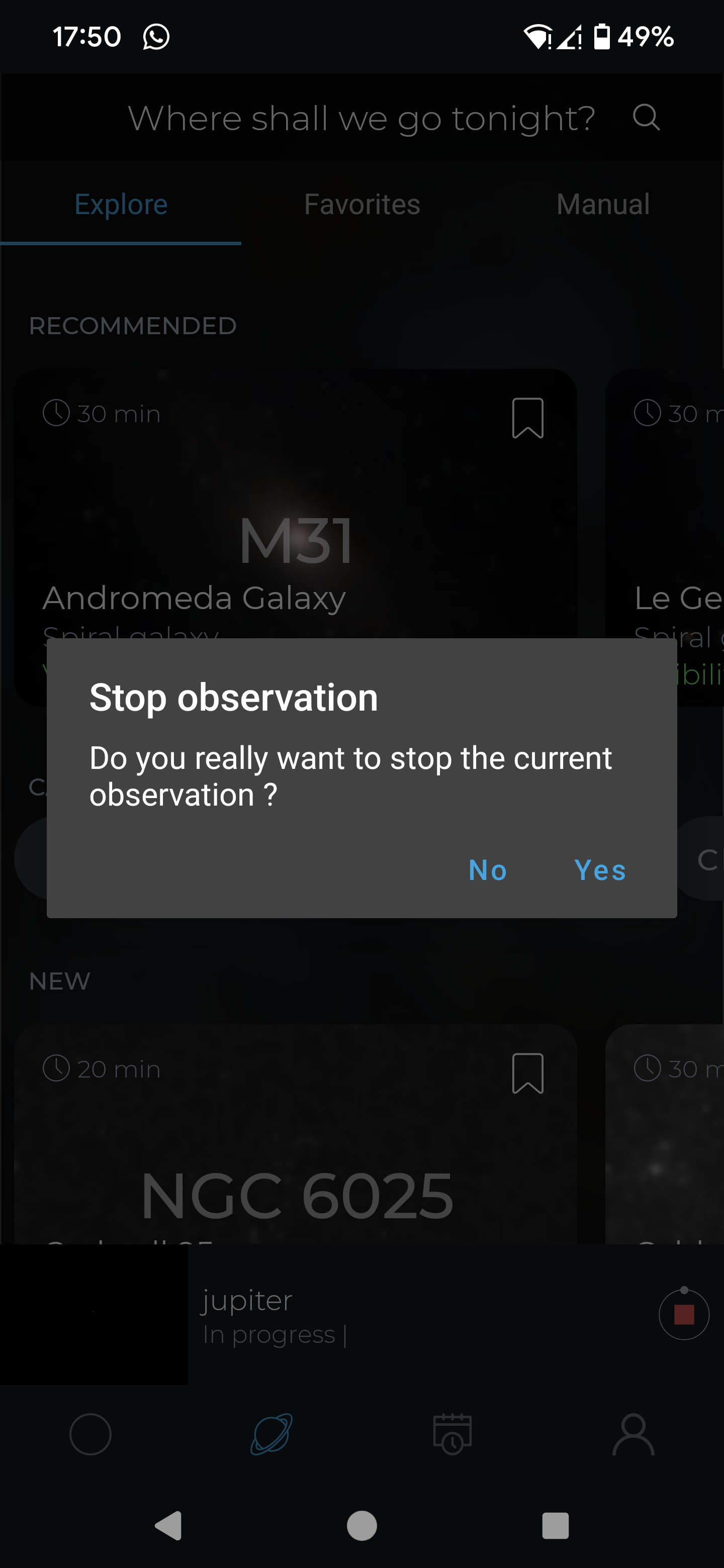Key specs
Picture decision: 8.3 MP
Focal ratio: F/5
Dimension: 40 x 20 x 9 cm (closed)
Area of view: 2.5 x 1.4-degrees (native)
Mount: Motorized alt-az
Battery: 4 hours (built-in)
Connectivity: Wi-Fi
Weight: 11 lbs (5 kg)
Vaonis’ newest fully-fledged good telescope, the Vaonis Vespera II, leads on from its predecessor the Vaonis Vespera which we reviewed in September 2023. It does the whole lot the unique mannequin did however higher, and it does this all whereas shaving over $800 / £530 off the unique’s MSRP.
You would be forgiven for conflating the 2 fashions, they’re similar to have a look at from the skin. Nonetheless, it is barely lighter and the eye to element contained in the telescope has ramped up considerably. As an alternative of a 2 Megapixel sensor the Vespera II packs 8.3 Megapixels (MP) and may ramp as much as 24MP when capturing in Dwell Mosaic Mode, an possibility that basically takes a patchwork panorama of your chosen space of evening sky.
Total, we predict this is likely one of the finest good telescopes you should buy proper now, and it is one of many least expensive (although nonetheless a big funding for a lot of astronomers). Whereas it isn’t the primary alternative telescope for seeing planets, it actually is likely one of the finest telescopes you should buy in order for you automation and astrophotographs in a matter of minutes from your individual yard.
Vanois Vespera II: Design
- ★★★★★
- Up and prepared inside 5 minutes
- Anybody with entry to smartphone can function
- Sufficiently small to tackle any journey
It is exhausting to discover a approach to simplify the design of the Vaonis Vespera II, a lot is the best way with many good telescope designs throughout all of the main manufacturers. Taking nearly all its cues from the unique Vespera the optical tube meeting (OTA), motor and all electronics are encased in a white, shiny plastic exterior that breaks aside to permit the OTA to slew into place to the specified goal. A single 1/4-inch tripod attachment on the bottom slots into the fixed-height tripod that it ships with as customary, although we’d advocate investing within the superior Vespera adjustable tripod to acquire some peak.
Operation by the Singularity app (Vaonis’ proprietary app suitable with Android and iOS gadgets) is simple. It took us about three to 4 minutes to attach through Wi-Fi and synchronize with the telescope. The person interface is filled with data however does not really feel cluttered. We discovered it simple to navigate the climate, information and telescope controls as a result of they’re compartmentalized into thirds on the app opening display screen.
One energy button on the telescope and a USB-C port for charging gave us about 11 hours of fixed use all through the evening and, relying on the climate and size of use, ought to see you thru a weekend journey to a darkish sky location with out the necessity to recharge with a energy financial institution.
Very similar to altering filters on a digital camera the Vespera II has an in-built filter, devoid of filtration, however might be swapped with a fast press of the button for his or her proprietary photo voltaic filter, permitting for daytime photo voltaic observations.
Whereas we completely liked the fast setup of the telescope, we did sometimes catch the ability button throughout meeting, turning it on by chance.
Vaonis Vespera II: Efficiency
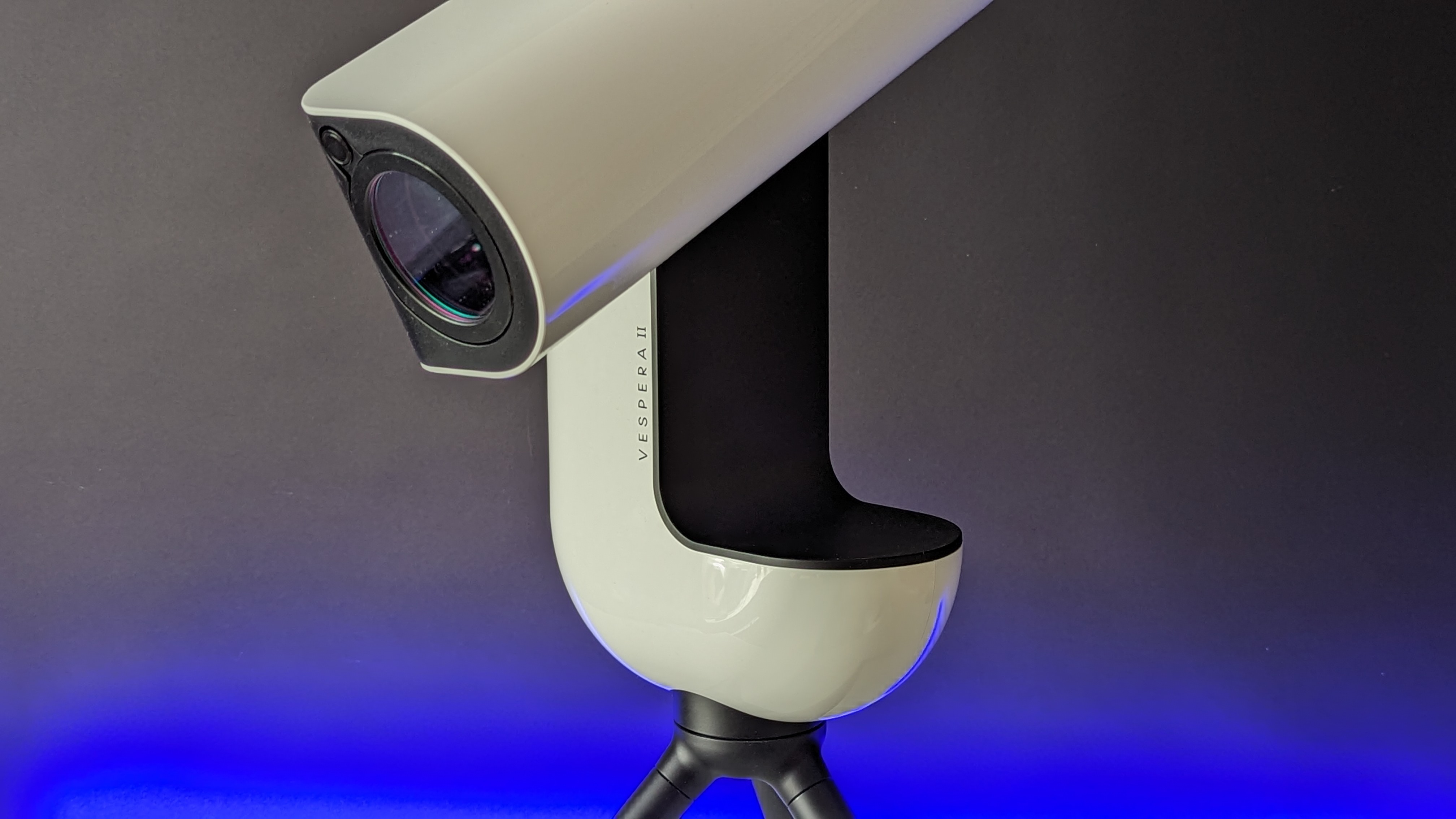
- ★★★★★
- Observations from light-polluted cities have been impressively clear
- Extremely detailed, contrasted galaxies
- Imaging planets was troublesome and underwhelming
After three to 4 minutes of setup by our Google Pixel 6 Professional Android cellphone, have been have been prepared to manage the good telescope by the Singularity app. We had the sunshine air pollution filter that shipped with the telescope connected and arrange within the yard. Contemplating it is a city with a Bortle class ranking of 5 we have been immensely happy with the colour rendition of the photographs.
Slewing straight to our favourite M42 within the Orion constellation views have been instantly spectacular. The primary picture produced {a photograph} most observers could be comfortable to share with pals and social media however longer observations improved issues additional. When in enhancement mode the Vespera II takes successive photos, stacking and processing them on the go. The result’s a picture with improved noise discount because it provides element and total readability of the goal and surrounding stars.
In our private expertise with the telescope, we discovered that observations of 1 goal from a light-polluted metropolis improved as much as round 15-20 minutes, however negligible variations after that. Nonetheless, heading to someplace with exceptionally darkish skies then we see these longer observations enhancing dramatically.
For instance, imaging M42 for five minutes 20 seconds gave us a mixture of 32 stacked photos with clear element within the nebula and real looking colours with no bias towards one white stability or one other. Exposing longer over 20 minutes 10 seconds left us with 121 stacked photos the place picture noise and finer particulars have been gained additional. Contemplating that is one in every of, if not the least expensive good telescope you should buy proper now, now we have to take our hat off to Vaonis for the standard of this instrument.
The sunshine air pollution filter, coupled with the very fact the telescope’s entrance component is recessed into the optical tube meeting means the Vespera II handles gentle air pollution surprisingly properly. Even observing simply 100 yards away from the closest road gentle there was minimal skyglow or flare.
It is not simply the favored nebulas like M42 which might be clear and detailed as a result of Vespera II’s wonderful gentle air pollution dealing with, but in addition our nearest galactic neighbor M31, the Andromeda Galaxy. With just some minutes of observing (three minutes and 50 seconds, to be exact) the galactic core and mud lanes have been seen with good definition. Regardless of longer exposures, we could not seize finer particulars round it like M32 or M110 (NGC 205) although however we suspect that’s extra to do with the town sky glow than the efficiency of the telescope.
The telescope additionally gave nice outcomes on different Messier objects like M51, M78 and M82 and even IC434, the Horsehead nebula regardless of being fairly small within the picture we have been nonetheless capable of make out the moment shapes and colours even when Alnitak gave some undesirable glare.
Even observing the moon we garnered some good views. Because the moon entered waxing gibbous (99.95% full) we had loads of gentle to seize photographs which you’ll be able to see above. Autoexposure dealt with the intense moon properly when slewed to, adjusting from the a lot darker evening sky when viewing M31 or M42. Nonetheless, it did not blow us away. We would favor to choose up a pair of the perfect binoculars or flip to a extra highly effective conventional telescope just like the Celestron NexStar 8SE to get the ‘wow’ issue when observing the moon, because the moon was just a bit too small within the body to impress us. This restriction of focal size transfers to planets as properly, making them almost unimaginable to identify if it weren’t for the tremendous correct automated slewing of the telescope.
Vaonis Vespera II: Performance
- ★★★★★
- Automated capabilities are strong and constant
- Singularity app might present extra data when there’s an error
- Required Wi-Fi synchronization restricts smartphone use for stargazing events
This can be a five-star good telescope overview for a five-start good telescope. We love the views and astrophotographs it takes for the value. Totally automated capabilities like go-to slewing, automated focusing and automated publicity (helpful for photo voltaic observations when used with the suitable photo voltaic filter) make this an eminently usable telescope day or evening. However that does not imply it is not with out limitations or niggles.
The Vespera II emits a Wi-Fi sign to attach with the Singularity app through a smartphone with sufficient vary (in our expertise not less than 5 meters) to both transfer across the yard or head again indoors for a heat cup of joe when imaging within the wintry nighttime. However this meant that we would have liked to interact the cell information on our smartphone with the intention to proceed streaming music or share photos through WhatsApp App and many others. If you do not have this potential, or if you happen to’re in a knowledge useless spot then you definitely’ll should unlink from the telescope to make use of the web in your gadget.
On a extra constructive observe, the app gives attention-grabbing statistics and data on targets when chosen to go the time while it slews, focuses and exposes the chosen object. This may be shared amongst the group if you happen to’re having a stargazing celebration because it takes a number of minutes when hopping between stars. After a couple of hops, we’d merely set down our smartphone whereas the telescope was getting itself aligned and targeted and fortuitously Vaonis had considered this. When the Vespera II is able to show the item the app lights up with a starry explosion animation which lights up dimly lit environments and grabbed our consideration to go and test the app. This can be a very good contact.
The Singularity app could possibly be made higher by routinely stopping an commentary when choosing one other goal, somewhat than requesting the present commentary to be manually stopped first. However we just like the belt and braces strategy to stopping an unintended stopping of a protracted publicity, however finally it was simply irritating.
Additionally, extra suggestions once we obtained a failed commentary would have been helpful. Or a faster manner for the telescope to detect that there was an obstruction like a fence, constructing or hill, or cloud cowl masking the evening sky object. We had a number of failed observations in a row leading to 35-40 minutes of wasted observations.
Ought to I purchase the Vaonis Vespera II good telescope?
We imagine that is the primary five-star telescope we have had on the positioning and for good motive. It completely smashes expectations, gives wonderful astrophotographs, and does the whole lot faultlessly like automated go-to, focusing and exposures, and the app does an excellent job of serving to novice astronomers who’re full novices.
Certain, there are higher telescopes on the market. Primarily conventional reflectors and catadioptrics that may vastly outperform the Vaonis Vespera II. But it surely is not designed to tackle the high-end Celestrons and Sky-Watchers of the world. It is a purpose-built, automated, evening sky-hunting machine. It is quick and easy to arrange, with no prior data required. And we predict it most accurately fits novices (who’re comfortable to take a position) or veteran astronomers who’ve noticed for years however not have the time or endurance to arrange a telescope manually and simply need to view evening sky objects casually, or with pals. Gentle air pollution in your space? No downside, the Vespera II handles that with ease, too.
If this product isn’t for you
As aforementioned, it is not the perfect telescope you should buy (however it’s inside its class and destined use as a wise telescope). For that we might advocate the Celestron NexStar 8SE. It is a hybrid reflector/refractor of kinds with a catadioptric Schmidt-Cassegrain design. We had breathtaking moments observing the lunar floor and objects rather more distant and dimmer. It has a motorized mount so can routinely slew to things just like the Vespera II and it prices across the identical. Nonetheless, you have to to learn to configure the telescope with a star alignment process earlier than you utilize that successfully.
If it is a good telescope you are after however you need much more ‘oomph’ then we would advocate the Unistellar eVscope 2. It is the corporate’s flagship product and operates largely in the identical manner because the Vespera II, with a Wi-Fi sign you hook up with with a smartphone app. However its higher focal size and high-quality optics can get you nearer glimpses into the darkish sky. It would attraction extra to those that choose conventional astronomy, too, as a result of it has a Nikon-designed eyepiece (although a digital one with a mini display screen inside) and a focusing wheel on the again of the Optical Tube Meeting (OTA) for handbook focusing adjustment.

